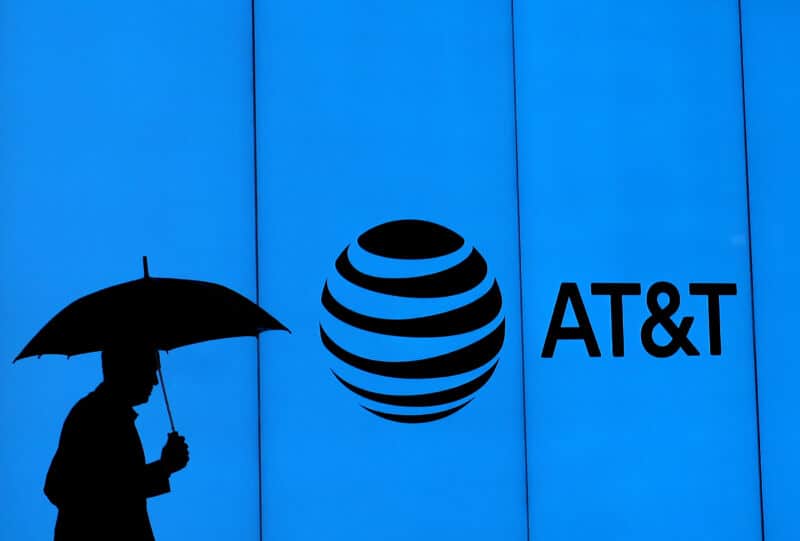AT&T lost 617,000 customers from DirecTV and its other TV businesses in the final quarter of 2020, capping a year in which it lost nearly 3 million customers in the category, AT&T reported today.
AT&T today also informed the Securities and Exchange Commission that it has taken “noncash impairment charges of $15.5 billion” related to its ongoing DirecTV debacle. AT&T said the $15.5 billion charges reflect “changes in our management strategy and our evaluation of the domestic video business… including our decision to operate our video business separately from our broadband and legacy telephony operations.” This operational decision “required us to identify a separate Video reporting unit and to assess both the recoverability of its long-lived assets and any assigned goodwill for impairment,” AT&T said.
AT&T said it also logged “charges of approximately $780 million from the impairment of production and other content inventory at WarnerMedia, with $520 million resulting from the continued shutdown of theaters during the pandemic and the hybrid distribution model for our 2021 film slate.”
The charges were added to AT&T’s Q4 expenses. As a result, AT&T reported a $13.9 billion net loss in the quarter, compared to a net profit of $2.4 billion a year ago. Q4 revenue was $45.7 billion, down from $46.8 billion year over year. The Q4 net loss swung AT&T to a full-year net loss of $5.4 billion.
“Executives called the non-cash accounting charge a sign of the pay-TV unit’s aging status as the Dallas company promotes an Internet-streaming model that gives its content-production business a direct line to viewers,” The Wall Street Journal wrote today.
“Our biggest and single most important bet is HBO Max,” AT&T CEO John Stankey said.
Premium TV customers flee in droves
AT&T is down to 16.5 million customers in the Premium TV category that includes DirecTV satellite, U-verse wireline video, and the newer AT&T TV online service. That’s down from 17.1 million three months earlier and down from 19.5 million since the beginning of 2020.
AT&T has strung together several years of big TV-customer losses since early 2017, when it had over 25 million users in the category. The loss of nearly 3 million customers in 2020 was an improvement over 2019, when AT&T lost 3.4 million Premium TV customers in the calendar year.
These numbers do not include the streaming service formerly known as DirecTV Now, which AT&T just killed off this month. The service dropped from 1.86 million subscribers in Q3 2018 to 656,000 by year-end 2020. Existing customers can keep that service, but AT&T isn’t offering it to new users.
DirecTV and U-verse customers have been driven away by years of price increases and AT&T’s reduced use of promotional offers. This is reflected in AT&T’s average revenue per user (ARPU) in the Premium TV category, which jumped from $121.76 per month at year-end 2018 to $131 at year-end 2019 and $137.64 at the end of 2020.
AT&T attributed the 617,000-customer loss in Q4 to “competition, lower gross adds from the continued focus on adding higher value customers and a programming dispute, partially offset by lower churn.”
Video revenue down 11.2 percent
AT&T reported video revenue of $7.2 billion in Q4 2020, “down 11.2 percent year over year due to declines in premium and [online] subscribers, partially offset by higher premium TV ARPU and higher advertising revenues during the general election.” Operating expenses in the category were $7.1 billion, leaving AT&T with a profit of $98 million.
AT&T doesn’t report individual numbers for DirecTV, U-verse TV, and AT&T TV. But the company said gains in AT&T TV streaming subscribers last quarter helped offset losses in DirecTV and U-verse, meaning that DirecTV and U-verse together lost more than the 617,000 net-customer loss in the Premium TV category.
AT&T said it is encouraged by the progress of HBO Max, which costs $15 a month on its own but is also included in various bundles. “The release of Wonder Woman 1984 helped drive our domestic HBO Max and HBO subscribers to more than 41 million, a full two years faster than our initial forecast,” Stankey said.
Selling DirecTV at a loss
AT&T bought DirecTV for $49 billion in 2015 but has been trying to sell the beleaguered satellite division for the past few months. AT&T is reportedly close to a deal to sell a stake in DirecTV to TPG, a private-equity firm, but AT&T may maintain majority ownership of the company. Bids for DirecTV have reportedly valued the subsidiary at about $15 billion.
Fiber gains, DSL losses
AT&T’s broadband-subscriber base remained steady at 14.1 million in the quarter. The company boosted fiber-to-the-premises subscribers from 4.68 million to 4.95 million in Q4 2020, but it dropped from 8.98 million to 8.74 million in fiber-to-the-node and from 440,000 to 407,000 in its outdated DSL service. AT&T stopped accepting new DSL customers in October 2020.
AT&T said its Q4 broadband revenue was “$3.1 billion, down 1.4 percent year over year due to declines in legacy services partially offset by higher IP broadband ARPU resulting from an increase in high-speed fiber customers and pricing actions.” Operating expenses were $2.8 billion.

